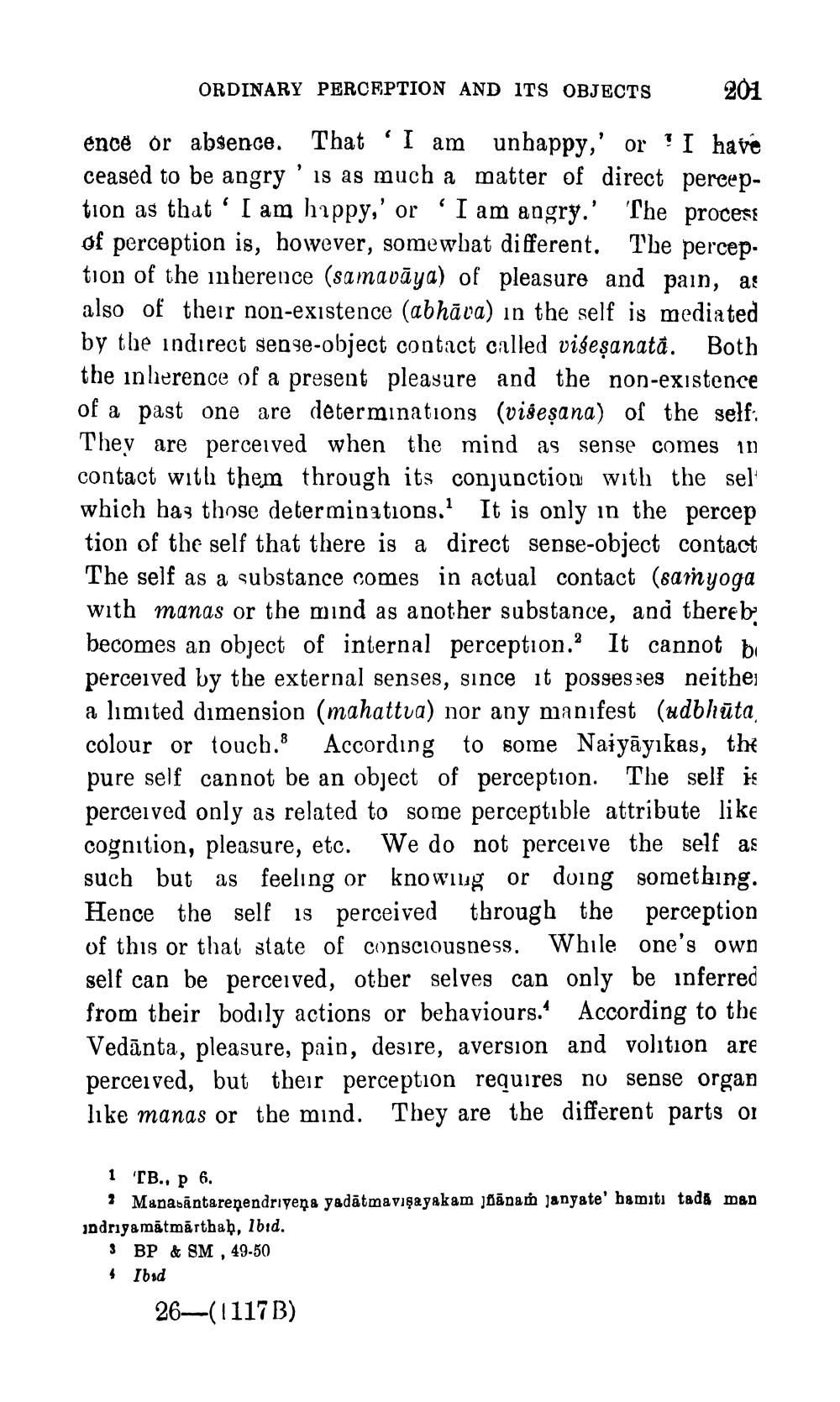________________
ORDINARY PERCEPTION AND ITS OBJECTS
201
ence or absence. That 'I am unhappy,' or 'I have ceased to be angry' is as much a matter of direct perception as that I am happy,' or 'I am angry.' The process of perception is, however, somewhat different. The perception of the inherence (samavāya) of pleasure and pain, as also of their non-existence (abhāva) in the self is mediated by the indirect sense-object contact called viseşanată. Both the inherence of a present pleasure and the non-existence of a past one are determinations (viseșana) of the self: They are perceived when the mind as sense comes in contact with them through its conjunction with the sel which has those determinations. It is only in the percep tion of the self that there is a direct sense-object contact The self as a substance comes in actual contact (sainyoga with manas or the mind as another substance, and thereby becomes an object of internal perception. It cannot bi perceived by the external senses, since it possesses neither a limited dimension (mahattva) nor any manifest (udbhūta, colour or touch. According to some Naiyāyikas, the pure self cannot be an object of perception. The self is perceived only as related to some perceptible attribute like cognition, pleasure, etc. We do not perceive the self as such but as feeling or knowing or doing something. Hence the self is perceived through the perception of this or that state of consciousness. While one's own self can be perceived, other selves can only be inferred from their bodily actions or behaviours. According to the Vedānta, pleasure, pain, desire, aversion and volition are perceived, but their perception requires no sense organ like manas or the mind. They are the different parts or
1 TB., p 6.
? Manabantareņendriyeņa yadātmavişayakam šādam jangate' bemiti tada man indriyamātmārthaḥ, Ibid.
3 BP & SM , 49-50 4 Ibid
26-(1117 B)




